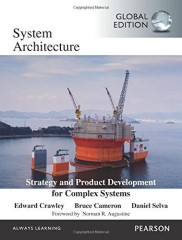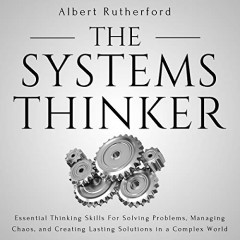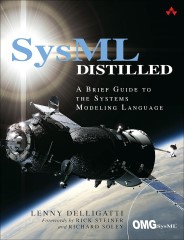Project management success rests on well-defined, communicated project requirements. Using the SMART technique offers a structured method to craft goals. These goals are Specific, Measurable, Attainable, Relevant, and Time-Bound. By following these principles, organizations can boost project results, elevate stakeholder satisfaction, and propel success. In this piece, we’ll explore SMART requirements, their value in project management, and share a striking example of their real-world application. So, let’s dive into pursuing smarter goals!
Table of Contents
What are SMART Requirements?
SMART requirements are an acronym that stands for Specific, Measurable, Attainable, Relevant, and Time-Bound. It is a framework used to set clear and actionable goals that increase the likelihood of project success. Each component of the SMART acronym ensures that project requirements are well-defined, trackable, realistic, aligned with organizational objectives, and time-bound.
Embracing SMART requirements provides several benefits for project management:
- Clarity and Focus: SMART requirements eliminate ambiguity, ensuring that project goals are clearly defined, understood, and communicated among stakeholders.
- Accountability and Measurement: The measurable aspect of SMART requirements enables progress tracking and performance evaluation, fostering accountability and transparency.
- Realistic and Achievable Goals: By considering attainability, SMART requirements set realistic expectations, preventing overambitious or unfeasible objectives.
- Alignment with Organizational Objectives: SMART requirements emphasize relevance, ensuring that project goals align with the broader strategic objectives of the organization.
- Time Management and Prioritization: The time-bound nature of SMART requirements promotes efficient time management, enabling prioritization and timely delivery.
By thoroughly addressing each component of the SMART framework, you can create goals that are clear, trackable, achievable, meaningful, and timely. This approach significantly increases the likelihood of success in project management and personal goal-setting alike.
Recommended Further Reading Amazon BooksSpecific: Defining Clear Goals
Specific goals leave no room for ambiguity or misinterpretation. They answer the questions of who, what, when, where, why, and how. By specifying precise and well-defined objectives, project teams can align their efforts and resources towards a common purpose.
Specific goals are the foundation of the SMART framework. They provide clarity and focus by answering the six “W” questions:
- Who: Who is involved in this goal?
- What: What do I want to accomplish?
- Where: Where is this goal to be achieved?
- When: When do I want to achieve this goal?
- Which: Which requirements and constraints are involved?
- Why: Why is this goal important?
Example: Instead of a vague goal like "Increase sales," a specific goal would be "Increase online sales of our premium product line by 20% in the North American market within the next quarter."
To get the best out of the ‘Specific’ component:
- Use action verbs to clearly state what needs to be accomplished.
- Provide enough detail to remove any ambiguity.
- Ensure that everyone involved understands their role in achieving the goal.
- Document the goal in writing to solidify its specifics.
Measurable: Quantifying Progress and Success
Measurable goals provide tangible criteria for evaluating progress and determining success. They involve quantifiable metrics or indicators that can be objectively assessed. Measurable goals enable project teams to track milestones, identify deviations, and make data-driven decisions.
Measurable goals allow you to track progress and know when you’ve achieved success. They answer questions like:
- How much?
- How many?
- How will I know when it is accomplished?
Example: Building on our sales goal, we can make it measurable by stating: "Increase online sales of our premium product line from the current $100,000 per month to $120,000 per month in the North American market by the end of Q3."
To get the best out of the ‘Measurable’ component:
- Identify specific metrics or KPIs that will indicate progress and success.
- Establish a baseline to measure against.
- Use tools or systems to track these metrics regularly.
- Set intermediate milestones to gauge progress along the way.
Attainable: Realistic and Feasible Targets
Attainable goals ensure that objectives are within reach and feasible with the available resources, skills, and constraints. While it is essential to aim high, setting unattainable goals can lead to frustration and diminished motivation. Attainable goals strike a balance between ambition and practicality.
Attainable goals strike a balance between challenging and realistic. They should stretch your abilities but remain possible given your resources and constraints.
Example: Continuing with our sales goal, we need to ensure it's attainable. If our historical growth rate has been 5% per quarter, a 20% increase might be ambitious but achievable with the right strategies and resources in place.
To get the best out of the ‘Attainable’ component:
- Assess your current resources, skills, and time constraints.
- Consider past performance and growth rates.
- Break down larger goals into smaller, manageable steps.
- Identify any additional resources or support needed to achieve the goal.
- Be prepared to adjust the goal if circumstances change significantly.
Relevant: Aligned with Organizational Objectives
Relevant goals are aligned with the broader objectives and strategies of the organization. They contribute directly to the mission and vision, ensuring that efforts are focused on areas that drive meaningful impact and value. Relevant goals provide a sense of purpose and direction.
Relevant goals align with broader objectives and contribute to long-term aims. They answer the question: “Does this goal matter to our overall mission and vision?”
Example: Our sales increase goal would be relevant if it aligns with the company's overall strategy of expanding market share in North America and focusing on premium products for higher profit margins.
To get the best out of the ‘Relevant’ component:
- Clearly understand your organization’s mission, vision, and strategic objectives.
- Ensure the goal directly contributes to these broader aims.
- Consider how the goal fits with other concurrent projects or initiatives.
- Evaluate whether the goal is worthwhile given current market conditions and organizational priorities.
- Gain buy-in from key stakeholders to confirm the goal’s relevance.
Time-Bound: Setting Deadlines and Milestones
Time-bound goals establish specific deadlines and milestones. They create a sense of urgency and provide a timeline for completion. Time-bound goals help in planning, prioritization, and resource allocation, preventing delays and ensuring timely project delivery.
Time-bound goals have a clear start date and end date. They create urgency and help prevent day-to-day tasks from taking priority over longer-term objectives.
Example: Our sales goal is time-bound by specifying "by the end of Q3." We can further enhance this by setting monthly targets: "Achieve a 7% increase in month 1, 13% by end of month 2, and 20% by end of month 3."
To get the best out of the ‘Time-Bound’ component:
- Set a specific deadline for the overall goal.
- Break the goal into smaller time-framed objectives or milestones.
- Create a timeline or Gantt chart to visualize the goal’s timeframe.
- Regularly review progress against the timeline.
- Build in some flexibility for unexpected delays, but maintain a sense of urgency.
Example of SMART Requirements in Action
To illustrate the practical application of SMART requirements, let’s consider a fictional example:
Project: Launching a Mobile Banking App
- Specific: Develop a user-friendly mobile banking app that allows customers to perform transactions, check balances, and access financial services conveniently.
- Measurable: Achieve a minimum of 100,000 app downloads within the first six months and maintain a customer satisfaction rating of at least 4 out of 5.
- Attainable: Ensure that the development team has the necessary skills and resources to build and launch the app within a budget of $500,000.
- Relevant: Align the mobile banking app with the organization’s strategic goal of enhancing customer experience and expanding digital banking services.
- Time-Bound: Launch the mobile banking app within nine months, with regular milestone checkpoints throughout the development process.
By implementing SMART requirements in this example, the project team can ensure that their goals are specific (launching a mobile banking app with defined features), measurable (100,000 app downloads and customer satisfaction rating), attainable (within budget and available resources), relevant (aligned with strategic objectives), and time-bound (launch within nine months).

SMART Requirements vs SMART Goals
While SMART goals and SMART requirements share the same acronym and similar principles, they serve different purposes in project management and organizational planning:
SMART Goals:
- Focus on the desired outcome or end result
- Typically broader in scope
- Used for setting direction and motivation
- Often apply to individuals, teams, or entire organizations
- Example: “Increase customer satisfaction ratings from 85% to 92% within the next fiscal year”
SMART Requirements:
- Focus on specific features, functionalities, or attributes needed to achieve a goal
- More detailed and technical in nature
- Used for defining project specifications and deliverables
- Typically apply to products, systems, or processes
- Example: “The new customer service platform must reduce average response time to customer inquiries from 24 hours to 4 hours by Q3”
The key difference lies in their application: SMART goals define what you want to achieve, while SMART requirements outline how you’ll achieve it. In practice, SMART requirements often support the achievement of SMART goals.
For effective project management, it’s beneficial to use both:
- Set SMART goals to define the overall objectives
- Develop SMART requirements to specify how those goals will be met
By using both SMART goals and SMART requirements, organizations can ensure clear direction (goals) and precise execution (requirements), leading to more successful project outcomes.
Recommended Future Learn Short CoursesImplementing SMART Goals: Best Practices and Common Pitfalls
Implementing SMART goals effectively can significantly improve project outcomes and personal productivity. However, the process isn’t always straightforward. Here are some best practices to follow and common pitfalls to avoid:
Best Practices
- Start with a Goal-Setting Workshop: Bring key stakeholders together to collaboratively set SMART goals. This ensures buy-in and alignment from the start.
- Use a SMART Goal Template: Create a standardized template that prompts users to address each component of the SMART framework. This ensures consistency and comprehensiveness in goal-setting.
- Break Down Large Goals: For complex projects, break the main SMART goal into smaller, more manageable SMART sub-goals or milestones.
- Regular Review and Adjustment: Schedule periodic reviews of your SMART goals. Be prepared to adjust them if circumstances change significantly.
- Align Individual and Team Goals: Ensure that individual SMART goals contribute to team goals, which in turn support organizational objectives.
- Leverage Technology: Use project management software or goal-tracking apps to monitor progress on SMART goals in real-time.
- Celebrate Achievements: Recognize and celebrate when SMART goals are achieved. This boosts morale and reinforces the value of the goal-setting process.
Common Pitfalls
- Over-Complicating Goals: Sometimes in an attempt to make goals “SMART,” they become overly complex. Keep goals as simple as possible while still meeting the SMART criteria.
- Neglecting the “A” (Attainable): Setting goals that are too ambitious can lead to demotivation. Ensure goals stretch capabilities but remain achievable.
- Focusing on Quantity Over Quality: Don’t set too many SMART goals at once. It’s better to focus on a few high-impact goals than to spread resources too thin.
- Ignoring External Factors: When setting goals, consider potential external influences or changes that could impact goal attainment.
- Lack of Flexibility: While SMART goals should be specific and time-bound, there needs to be some flexibility to adapt to changing circumstances.
- Forgetting the “Why”: Always connect SMART goals back to the bigger picture. Understanding why a goal matters increases motivation and commitment.
- Not Involving Key Stakeholders: Failing to involve those who will be responsible for achieving the goals can lead to lack of buy-in and poor execution.
Example: Implementing a SMART Goal in a Marketing Campaign
Let’s walk through an example of implementing a SMART goal for a marketing campaign:
Goal: “Increase engagement on our company’s Instagram account by posting high-quality content consistently.”
Making it SMART:
- Specific: Increase Instagram followers by 5,000 and achieve an average engagement rate of 5% per post.
- Measurable: Track follower count and use Instagram’s analytics to measure engagement rate.
- Attainable: Based on current growth rates and industry benchmarks, this goal is challenging but achievable.
- Relevant: Aligns with the company’s objective to increase brand awareness and customer engagement on social media.
- Time-bound: Achieve this goal within the next 3 months.
Final SMART Goal: “Increase our company’s Instagram followers by 5,000 and achieve an average engagement rate of 5% per post within the next 3 months by posting high-quality, relevant content consistently (at least 5 times per week).”
Implementation:
- Create a content calendar for the next 3 months.
- Assign team members responsible for content creation, posting, and engagement monitoring.
- Set up weekly check-ins to review progress and adjust strategies if needed.
- Use a social media management tool to schedule posts and track metrics.
- Celebrate milestones (e.g., every 1,000 new followers).
By following these best practices and avoiding common pitfalls, you can effectively implement SMART goals in your projects and personal endeavors, leading to improved focus, motivation, and success rates.
Conclusion
SMART requirements serve as a powerful tool in project management, enabling organizations to set goals that are specific, measurable, attainable, relevant, and time-bound. By incorporating these principles, project teams can increase the likelihood of success, enhance stakeholder satisfaction, and drive organizational growth. The example of launching a mobile banking app demonstrates how SMART requirements can be applied in a real-world scenario, ensuring a clear focus, quantifiable progress, realistic targets, alignment with organizational objectives, and timely delivery. So, embrace the power of SMART requirements and unlock the potential for project excellence.
























